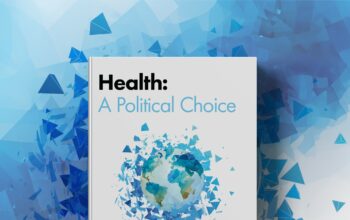Novel coronavirus 2019-nCoV exposes a flaw in the Nagoya Protocol
This article was originally published in STAT News on February 5, 2020.
As the number of people infected with the novel coronavirus 2019-nCoV increases each day, scientists around the world are racing to find a treatment. Since the virus was first reported from Wuhan, China, at the end of December, and the declaration of a public health emergency of international concern on Jan. 30, commitments to fund research and development efforts are being made by governments, research institutes, partnerships and companies.
As the clock ticks, we should take a moment to realize we are witnessing something quite remarkable: The impressive speed with which science about 2019-nCoV is being shared.
From the day of the outbreak’s first report, it took little more than one week for the World Health Organization to confirm the existence of the new coronavirus and for Chinese scientists to publish its genetic sequence. Think back to 2003 when it took more than two months for the sequence of the coronavirus that causes SARS to be shared with the world.
The speed with which the sequence of 2019-nCoV has been shared is a potent reminder of how we should avoid tying up the research community in red tape when we are in a race to find a new vaccine or treatment for a new virus or other pathogen.
But that is precisely what a legally binding international agreement, the Nagoya Protocol on Access and Benefit Sharing, has inadvertently ended up doing. This supplementary international agreement to the Convention on Biological Diversity could make it extraordinarily difficult to conduct disease surveillance or forge research collaborations around the world.
The Nagoya Protocol has the laudable aim of giving each country sovereignty over its biological resources. But this could hinder, or even prevent, the global collaboration required to find new treatments or vaccines. Today, more and more countries are moving towards enacting the Nagoya Protocol in national legislation, interpreting it in a way that requires sharing of pathogen samples and their information to be subject to negotiation between two parties.
Had China followed Nagoya Protocol requirements following the discovery of 2019-nCov, it could have embarked on discussions with each country, one by one, about how to share the sequence of this pathogen. That runs counter to WHO guidance on managing ethical issues in outbreaks: “Rapid data sharing is critical during an unfolding health emergency. The ethically appropriate and rapid sharing of data can help identify etiological factors, predict disease spread, evaluate existing and novel treatments, symptomatic care and preventive measures, and guide the deployment of limited resources.”
As The Lancet put it in a Jan. 24 editorial on the novel coronavirus that I firmly endorse, “Openness and sharing of data are paramount. There are enormous demands for rapid access to information about this new virus, the patients and communities affected, and the response. But equally crucial is the need to ensure that those data are reliable, accurate, and independently scrutinized.”
The inclusion of pathogens (as a genetic resource) under the Nagoya Protocol was not directly addressed in the final text of the protocol. It was left to each party to “pay due regard” to potential public health risks when implementing legislation.
This has led to increasing confusion and lack of alignment on implementing the Nagoya Protocol. Some countries do not include pathogens in the protocol. Others do, which has led to delays and disruption in the comprehensive sharing of samples of seasonal influenza and related genetic sequence information. Sharing such information is key to enabling researchers and manufacturers to identify and produce the necessary diagnostics, vaccines, and other treatments that contribute to a rapid response to epidemics and pandemics.
In other words, the potential of the Nagoya Protocol for adverse impacts on infectious disease prevention, timely epidemic response and, ultimately, global health security, is quite significant.
As the director general of the International Federation of Pharmaceutical Manufacturers and Associations, a research-based biopharmaceutical industry body with official relations with the United Nations, I support the Convention on Biological Diversity, which has three laudable objectives: conservation of biological diversity, the sustainable use of its components, and the fair and equitable sharing of the benefits arising out of the use of genetic resources. But protecting the biodiversity of pathogens seems a perversion of the original aims of the convention.
Pathogens know no borders, so any obstacle to sharing them and/or their associated information will hinder essential global collaborations with the private and public sectors needed to develop effective countermeasures to disease outbreaks.
The GISAID Initiative aims to promote the international sharing of human and animal virus data. It has played a critical role in centralizing the collection of coronavirus sequences so they can be quickly and comprehensively shared with the international community — thanks to the credibility the initiative has gained in more than a dozen years of sharing the sequences of influenza viruses. In so doing it has won the trust and confidence that all parties are working together to share sequences fairly and follow the scientific etiquette of acknowledging the source of the data.
I believe it is in the world’s best interests to promote trust and fairness for the sake of global public health by making the sharing of pathogens and associated information swift and predictable.
It is time to question the sense of retaining pathogens within the scope of the Nagoya Protocol and associated national legislation. It is surely in the overriding interest of global public health and epidemic and pandemic preparedness for the international community to work towards an effective and internationally coherent approach to exempt pathogens from the protocol.
Thomas B. Cueni is Director-General of The International Federation of Pharmaceutical Manufacturers & Associations (IFPMA).
Author






